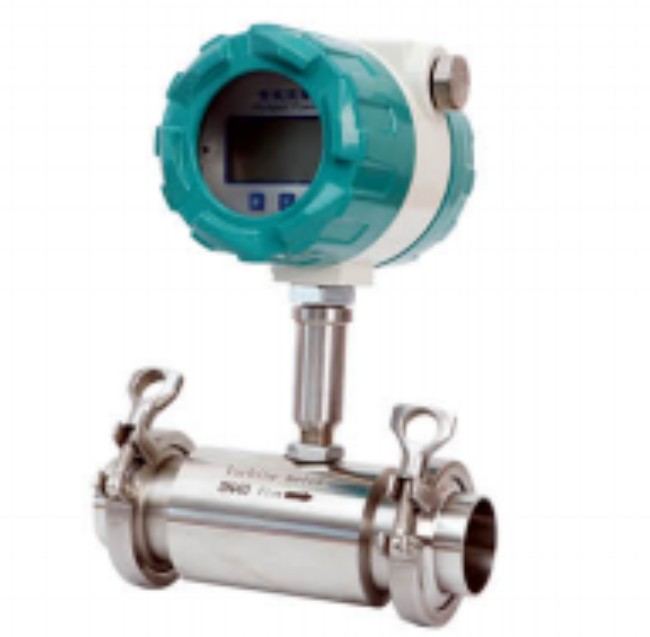BETTER TOUCH BETTER BUSINESS
Contact Sales at KAIDI.
Turbine flow meters are a type of velocity flow meter that have found widespread use in a variety of industrial applications – including aerospace, cryogenic, and custody transfer – for high accuracy measurements. The mechanical turbine flow meter is reliable for use with both liquids and gases. It consists of a multi-bladed rotor mounted at right angles to the fluid flow and suspended in the fluid stream on a free-running bearing. The diameter of the rotor is very slightly less than the inside diameter of the metering chamber, and its speed of rotation is proportional to the volumetric flow rate.
The rotational speed of the turbine is proportional to the velocity of the fluid. Different methods are used to convey rotational speed information. The usual method is by electrical means where a magnetic pick-up or inductive proximity switch detects the rotor blades as they turn. As each blade tip on the rotor passes the coil it changes the flux and produces a pulse. Pulse rate is directly proportional to the flowrate.
As the rotation of the turbine is measured by means of non-contact, no tapping points are required in the pipe. Pressure is therefore not a problem, and in fact pressures can be applied without any problem, but this of course does depend on pipe diameter and materials of construction.
Temperature limitations are only imposed by the limitations of the materials of construction. To reduce losses or changes in process temperature, turbine flow meters are available which can be subjected to wide temperature variations.
Turbine meters require a good laminar flow. In fact 10 pipe diameters of straight line upstream and no less than 5 pipe diameters downstream from the meter are required. They are therefore not accurate with swirling flows.
They are not recommended for use with high viscosity fluids due to the high friction of the fluid which causes excessive losses as the turbine becomes too much of an obstruction. The viscosity of the liquid must be known for use of this type of meter. They are also subject to erosion and damage. Each meter must be calibrated for its application.

Turbine flow meter advantages and disadvantages
Advantages of turbine flow meter
– Very high-pressure capability
– Measurement of non-conductive liquids.
– Capability of heating measuring device..
– Suitable for very low flow rates.
– High accuracy, repeatability and Rangeability for a defined viscosity and measuring range.
– Temperature range of fluid measurement: -220oC to +350oC.
Disadvantages of turbine flow meter
– Not effective with swirling fluids.
– Only suitable for clean liquids and gases.
– Pipe system must not vibrate.
– Specifications critical for measuring range and viscosity.
– Not suitable for high viscous fluids.
– Viscosity must be known.
– 10 diameter upstream and 5 diameter downstream of straight pipe is required.
Application Limitations
As turbine meters rely on the flow, they do absorb some pressure from the flow to propel the turbine. The pressure drop is typically around 20 to 30 kPa at the maximum flow rate and does vary depending on flow rate
We are here to help you! If you close the chatbox, you will automatically receive a response from us via email. Please be sure to leave your contact details so that we can better assist